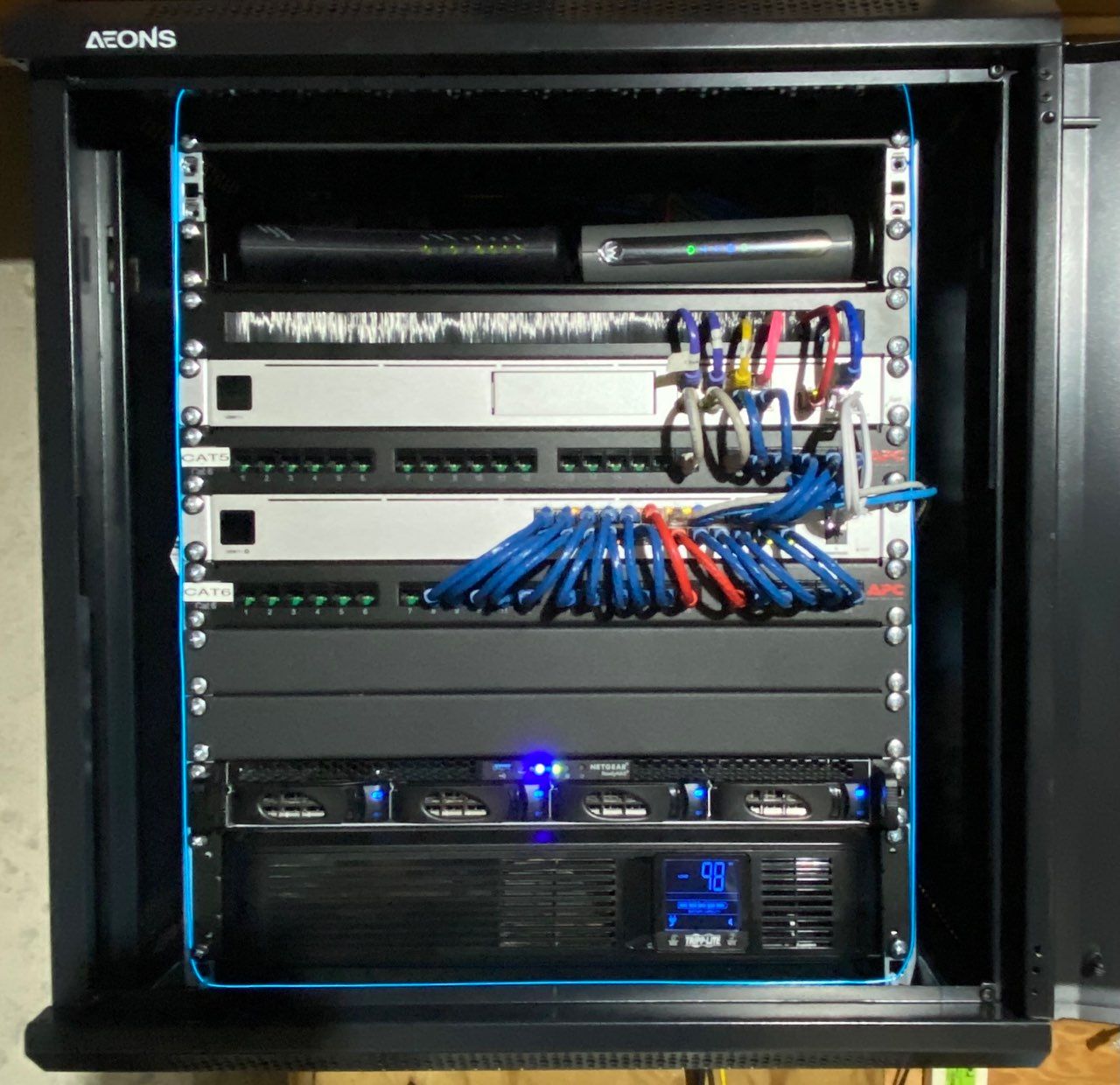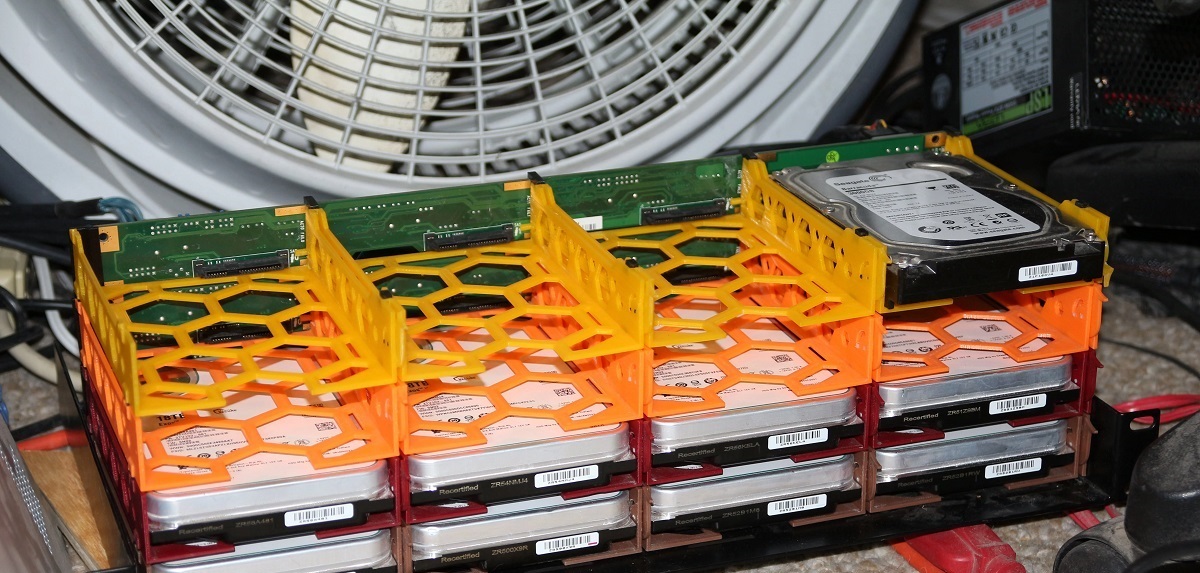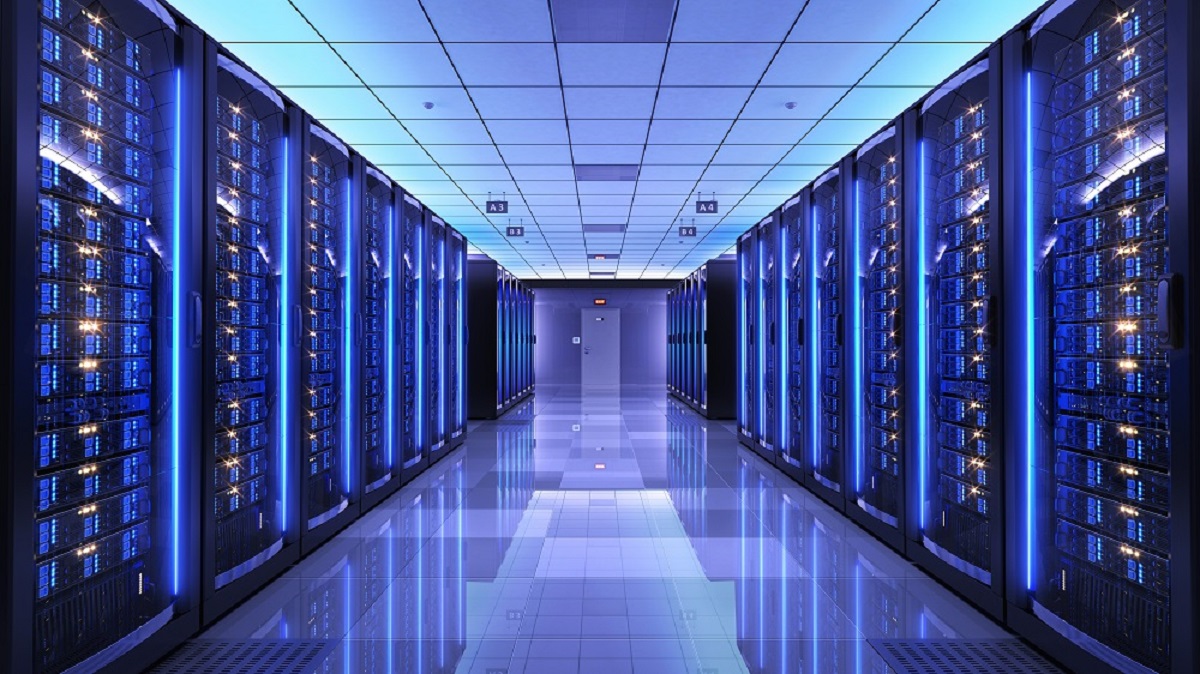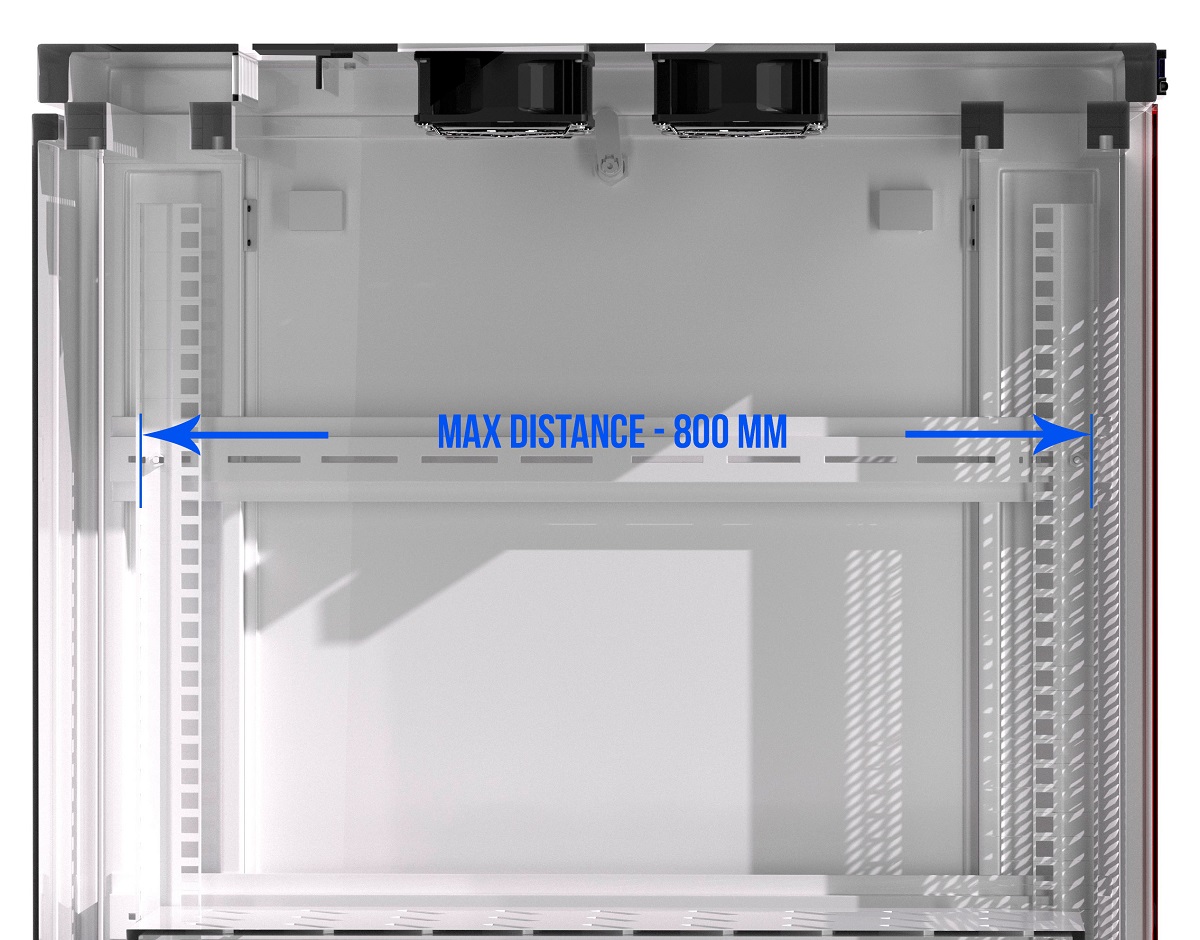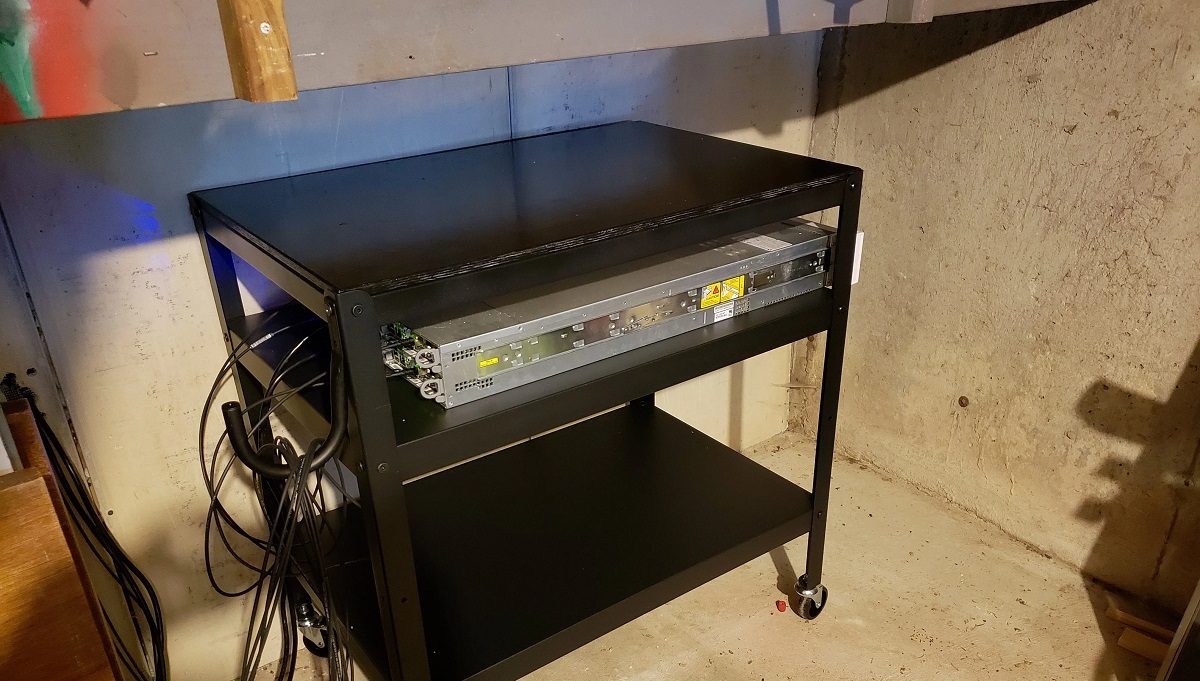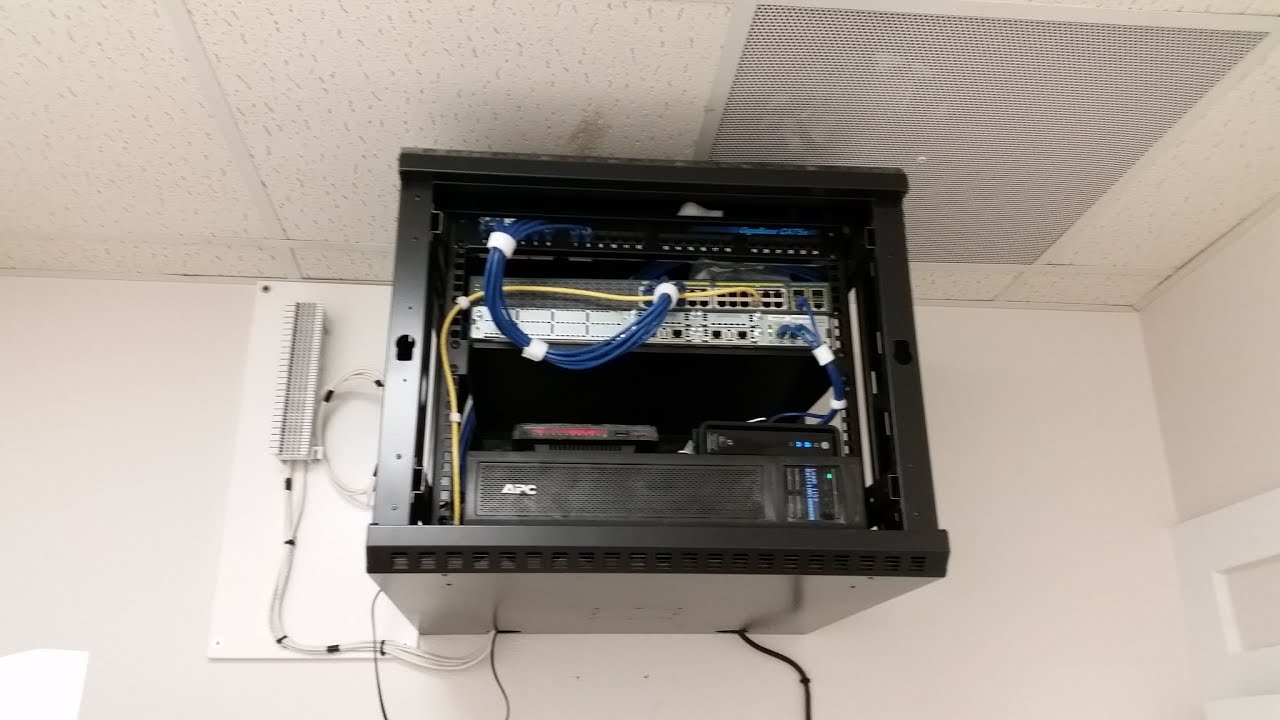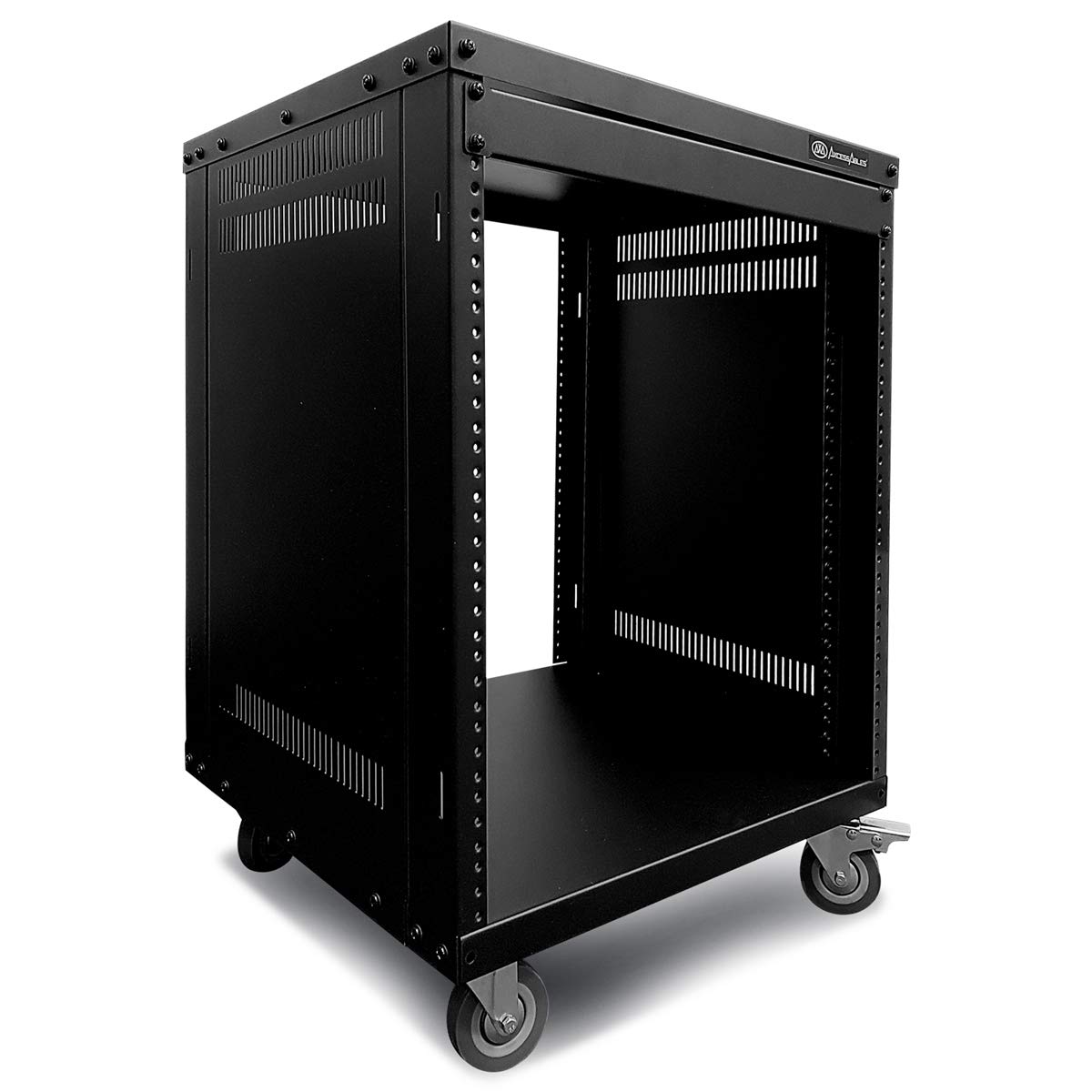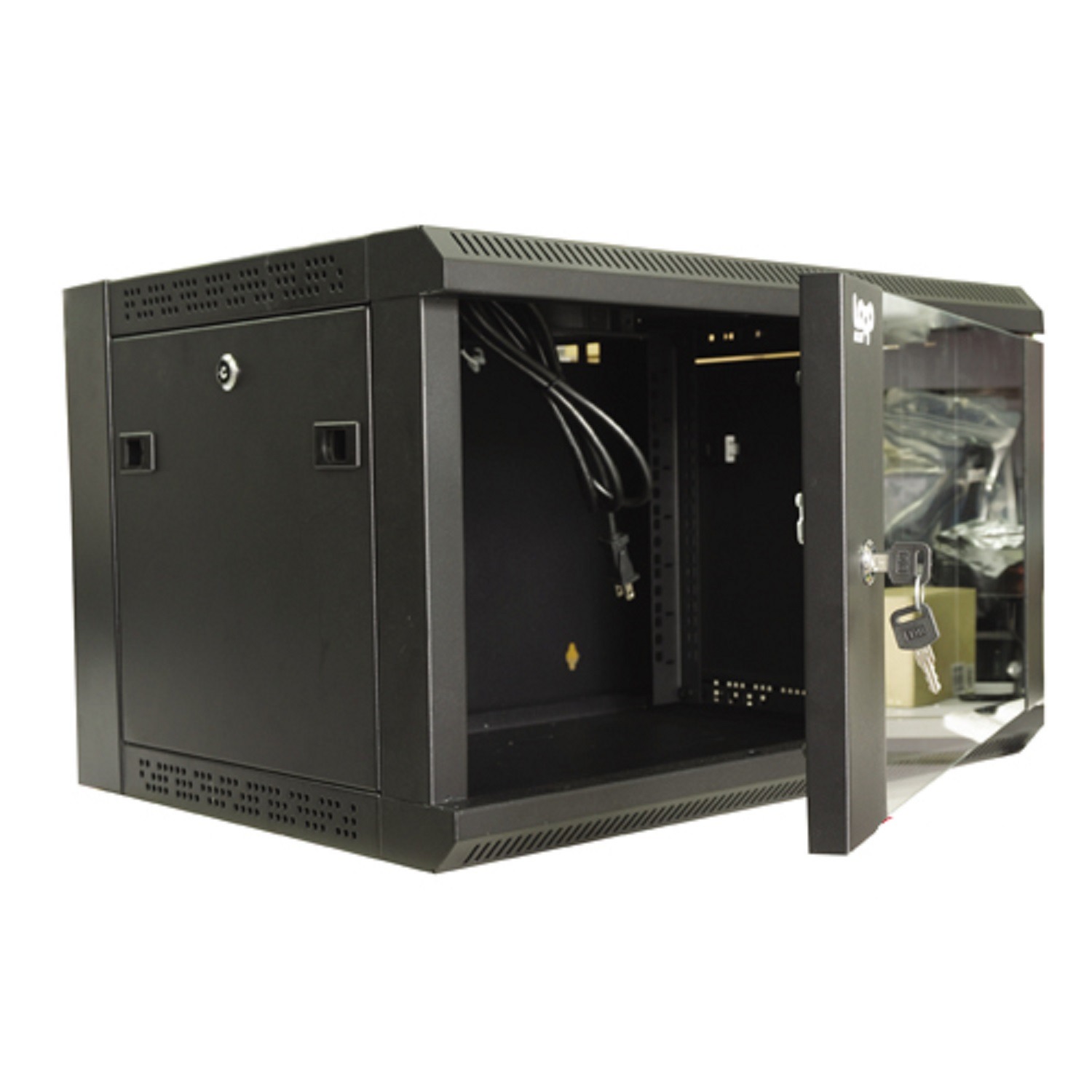Introduction
Welcome to the world of server racks! If you are setting up a data center, a server room, or even a small home office, a server rack is an essential piece of equipment to house your server and networking infrastructure. A well-organized and properly equipped server rack ensures the smooth functioning of your IT operations, improves efficiency, and enhances overall performance.
In this article, we will explore the various components that you should consider placing in your server rack. From networking equipment to cooling systems and cable management tools, each component plays a crucial role in creating a secure and optimized environment for your servers.
By properly understanding and implementing these components, you can ensure a streamlined and efficient setup that optimizes your equipment’s performance and longevity. So, let’s dive into the essential elements you should put in your server rack.
Note: Before proceeding, it’s important to mention that while this article provides a general overview of the components, it is crucial to consult with a professional or refer to the specific manufacturer’s guidelines for precise installation instructions and compatibility.
Networking Equipment
Networking equipment is fundamental for establishing and maintaining reliable connectivity within your server infrastructure. This includes devices such as routers, switches, and firewalls, which serve as the backbone of your network.
Routers play a critical role in forwarding data packets between different networks, ensuring that your servers can communicate with other devices and access the internet. Switches, on the other hand, provide local network connectivity, allowing data to flow efficiently between devices within the same network. Firewalls are essential for network security, protecting your servers from unauthorized access and potential threats.
When placing networking equipment in your server rack, consider factors such as the number of ports required, power requirements, and management capabilities. Some switches and routers come with web-based management interfaces, allowing you to configure and monitor your network settings conveniently.
Additionally, it is essential to plan for future scalability. Select networking equipment that offers expansion options, such as modular switches with additional slots for expansion modules. This allows you to easily add more ports or features as your network grows.
Organizing networking equipment in your server rack is crucial for efficient cable management. Use vertical or horizontal cable management accessories to neatly organize and route the cables coming from the networking devices. This helps to minimize cable clutter and makes troubleshooting and maintenance tasks easier.
Remember: Before installing networking equipment, ensure that the power supply is available nearby, as these devices often require separate power connections to operate efficiently.
Servers and Server Components
Servers are the heart of any IT infrastructure, handling various tasks such as hosting websites, processing data, and managing network resources. When setting up your server rack, it is vital to carefully consider the type and configuration of servers you need.
First and foremost, determine the number of servers required based on your workload and data processing needs. Consider factors such as the expected amount of traffic, the complexity of applications or services, and the level of redundancy required for high availability.
Server form factors include rack-mounted servers, tower servers, and blade servers. Rack-mounted servers are the most common choice for server racks, as they are designed to fit into standard rack units. Tower servers are freestanding units that are suitable for small setups or environments lacking a dedicated server room. Blade servers are compact modules that can be fitted into a blade chassis, offering high density and efficient power usage.
In addition to the servers themselves, consider the necessary server components. These include the central processing unit (CPU), random-access memory (RAM), storage drives (such as hard disk drives or solid-state drives), and network interface cards (NICs). Ensure that the server components are compatible with your chosen server form factor and rack unit size.
Proper airflow is crucial for maintaining optimal server performance and preventing overheating. Install server rails or shelves to securely hold and position the servers within the rack. This allows for proper airflow through the front and rear of the servers, ensuring efficient cooling.
Furthermore, consider cable management when placing servers in the rack. Use cable management solutions, such as horizontal cable managers or cable trays, to neatly organize and route the cables coming from the servers. This not only improves aesthetics but also facilitates easy access and maintenance.
Tip: Label and document your servers and server components to ensure easy identification, troubleshooting, and maintenance.
Power Distribution Units (PDUs) and Uninterruptible Power Supplies (UPS)
A reliable power supply is essential for the smooth and uninterrupted operation of your server rack. Power Distribution Units (PDUs) and Uninterruptible Power Supplies (UPS) play critical roles in ensuring power distribution, backup, and protection.
PDUs are devices that distribute power to multiple servers and networking equipment within the rack. They provide a centralized power source, eliminating the need for individual power cords for each device. PDUs come in various types, such as Basic PDUs, Metered PDUs, and Managed PDUs. Basic PDUs offer basic power distribution, while Metered PDUs provide monitoring and power consumption information. Managed PDUs offer advanced features such as remote monitoring and control.
When selecting a PDU, consider the number and type of outlets required, the power load capacity, and the management features you need. It is essential to ensure that the PDU can handle the power requirements of your equipment and has sufficient outlets to accommodate your servers and networking devices.
Uninterruptible Power Supplies (UPS) provide backup power in case of power outages or fluctuations. They are crucial for protecting your equipment from unexpected shutdowns and maintaining uptime. UPS systems are typically equipped with batteries that can provide power for a certain duration, allowing you to safely shut down servers or continue operating till the power is restored.
When choosing a UPS, consider factors such as power capacity, battery runtime, and the number of outlets. Determine the power load of your servers and networking equipment to select a UPS with appropriate capacity. Additionally, consider the runtime required during power outages to ensure sufficient battery backup.
Proper placement and organization of PDUs and UPS within the server rack are essential. Mount the PDUs and UPS units securely to the rack, ensuring they are easily accessible for power management and maintenance tasks.
Remember to connect your servers and networking equipment to the PDUs and UPS using appropriate power cables. Use cable management solutions, such as cable ties or Velcro straps, to keep the power cables organized and prevent tangling.
Tip: Consider using power management software or network-enabled PDUs to remotely monitor and control power usage and to receive alerts about any power-related issues.
Cooling Systems
Cooling systems play a crucial role in maintaining optimum temperature levels within your server rack. Proper cooling is essential to prevent overheating, which can lead to hardware failures, performance degradation, and downtime.
There are various cooling options available for server racks, including air-based and liquid-based cooling systems. Air-based cooling involves the use of fans and ventilation systems to circulate air and dissipate heat. This can include rack-mounted fans, cooling fans within servers, and overhead or underfloor cooling units.
When selecting cooling systems, consider the heat load of your servers and networking equipment. Calculate the total power consumption and heat dissipation to determine the cooling capacity you need. Ensure that the cooling systems are capable of maintaining the recommended operating temperature ranges specified by the equipment manufacturers.
Proper airflow management is critical for effective cooling. Arrange your servers in a way that allows for unrestricted airflow. Use blanking panels to cover any empty spaces between servers to prevent recirculation of hot air. Install front and rear rack doors with perforations or mesh to promote airflow while maintaining security.
Cable management also plays a role in cooling efficiency. Use cable management solutions to organize and route cables away from the airflow path. This helps to prevent cable obstructions and allows cool air to reach the server components effectively.
If your server rack is located in a small room or confined space, consider installing additional ventilation or air conditioning units to regulate the overall temperature. Ensure that the room has proper ventilation and airflow to dissipate the heat generated by the servers.
Regular maintenance of cooling systems is crucial for optimal performance. Clean or replace air filters regularly to prevent dust buildup, which can obstruct airflow. Conduct periodic checks for any signs of malfunction, such as noisy fans or abnormal temperature readings.
Tip: Consider using environmental monitoring systems to monitor temperature, humidity, and other environmental factors within your server room or data center. This allows you to detect any deviations or potential cooling issues promptly.
Cable Management Tools
Proper cable management is essential in a server rack to ensure efficient organization, easy maintenance, and optimal airflow. Cable management tools help in neatly routing and securing the cables, reducing clutter and avoiding any accidental cable damage.
When it comes to cable management, several tools and accessories can assist in achieving a well-organized and tidy rack. One such tool is cable trays or cable management arms. These tools provide a dedicated path for routing cables in an organized manner, preventing them from tangling or interfering with server components.
Cable ties or Velcro straps are essential for bundling and securing cables. Use them to gather and bind together cables that run parallel or to attach cables to the rack. Velcro straps offer the advantage of being reusable and adjustable, making it easier to add or remove cables when necessary.
Cable labels or markers are crucial for easy identification and troubleshooting. Label each cable with relevant information, such as its destination, port number, or device name. This minimizes confusion when tracing cables and reduces the time required for maintenance or equipment replacement.
Patch panels or keystone jacks provide a central location to terminate network cables. They allow for easy connection and disconnection of devices without the need to directly plug and unplug cables from the devices themselves. This reduces strain on the cables and the risk of accidental disconnections.
Cable management tools also include horizontal and vertical cable management accessories, such as cable managers and cable rings. These tools help guide and organize the cables, keeping them in tidy bundles and preventing them from obstructing airflow or impeding access to equipment.
When installing cable management tools, ensure that they are compatible with the size and configuration of your server rack. Use them strategically to create designated cable paths and separate power and data cables to minimize electromagnetic interference.
Regularly audit and reassess your cable management setup to accommodate any changes or additions in your server rack. Proper cable management not only enhances the aesthetics of your setup but also facilitates quicker troubleshooting, maintenance, and equipment upgrades.
Tip: Document your cable management setup, including cable routing and labeling schemes. This documentation can serve as a reference for future maintenance tasks and troubleshooting.
Security Measures
Securing your server rack is crucial to protect your sensitive data and equipment from unauthorized access and physical threats. Implementing appropriate security measures ensures the integrity and confidentiality of your IT infrastructure. Here are some important security considerations for your server rack:
Physical Security: Start by choosing a secure location for your server rack. Ideally, place it in a locked server room or data center. Control access to the room with key card systems or biometric authentication. Restrict access only to authorized personnel who need to interact with the servers.
Rack Enclosures: Consider using rack enclosures with lockable doors and side panels. This provides an additional layer of physical security, preventing unauthorized individuals from tampering with the equipment or accessing the cables.
Locks and Security Cages: Install locks on the front and rear doors of the server rack to prevent unauthorized access. If your server rack is in an open area, consider using security cages or barriers to restrict physical access further.
Video Surveillance: Install video surveillance cameras in the server room or data center to monitor and record activities. This not only deters potential intruders but also provides evidence in case of any security incidents.
Alarm Systems: Install security alarm systems that can detect and alert you in the event of unauthorized access, tampering, or any abnormal conditions within the server rack. These alarms can be integrated with your overall security system for prompt response.
Monitoring and Auditing: Implement robust server monitoring and auditing tools to keep track of any suspicious activity or performance issues. Use intrusion detection systems to detect any unauthorized attempts to access the server rack.
Remote Access Control: Implement secure and encrypted remote access protocols, such as SSH or VPN connections, to ensure secure remote management of your server rack. Restrict remote access to authorized users only and regularly update access credentials.
Security Policies and Training: Establish and enforce strict security policies for all personnel accessing the server rack. Regularly train and educate employees on best security practices, including password management, physical security protocols, and information handling.
Backup and Disaster Recovery: Implement regular data backups and a robust disaster recovery plan to protect your data in case of any security breaches or unexpected events. Store backup data in secure off-site locations.
Remember, security is an ongoing process. Regularly evaluate and update your security measures to stay ahead of potential threats and ensure the continued protection of your server rack and data.
Monitoring and Management Tools
Monitoring and management tools are essential for maintaining the performance, availability, and security of your server rack. These tools provide valuable insights into the health and functioning of your servers, network devices, and other infrastructure components. Here are some key monitoring and management tools to consider:
Server Monitoring Software: Utilize server monitoring software to track vital server metrics such as CPU usage, memory utilization, disk space, and network performance. This enables proactive identification of potential issues, allowing you to address them before they impact your operations.
Network Monitoring Tools: Network monitoring tools help you monitor the performance and availability of your network devices. These tools can provide real-time visibility into network bandwidth usage, latency, packet loss, and more. They also facilitate troubleshooting and identifying potential network bottlenecks.
Configuration Management Systems: Implement configuration management systems to centralize and automate the management of server configurations. These tools enable you to track and control changes made to server settings, ensuring consistency and reducing the risk of misconfigurations.
Remote Management Interfaces: Choose servers and networking devices that offer remote management interfaces, such as Integrated Lights Out (iLO) or Intelligent Platform Management Interface (IPMI). These interfaces allow for remote administration and monitoring, reducing the need for physical access to the server rack.
Log Analysis and Event Management: Log analysis and event management tools help you collect, analyze, and correlate log data from various servers and network devices. This aids in identifying security incidents, system errors, and other critical events in your server rack.
Virtualization Management Platforms: If you have virtualized servers, consider using virtualization management platforms like VMware vSphere or Microsoft Hyper-V. These platforms offer comprehensive management, monitoring, and performance optimization features for virtual machines running on your servers.
Asset Tracking and Inventory Tools: Maintain accurate inventory records of your server rack by utilizing asset tracking and inventory tools. These tools help you track hardware details, warranty information, and software licenses, ensuring effective asset management and planning.
Security Information and Event Management (SIEM) Systems: SIEM systems collect and analyze security event logs from various sources to identify and respond to security incidents. They provide a centralized view of security events, aiding in the detection and mitigation of potential threats within your server rack.
Investing in robust monitoring and management tools enhances your ability to proactively identify issues, ensure optimal performance, and maintain a secure environment within your server rack. These tools enable effective administration, troubleshooting, and resource planning, ultimately improving the overall reliability and efficiency of your IT infrastructure.
Additional Accessories
In addition to the essential components, there are several additional accessories you can consider incorporating into your server rack setup. These accessories enhance functionality, organization, and overall convenience. Here are some options to consider:
Rack-mount Drawers: Rack-mount drawers provide additional storage space within your server rack. They are useful for storing tools, spare parts, cables, and other equipment that you may need for maintenance or troubleshooting tasks.
Rack-mount Shelves: Rack-mount shelves are handy for storing non-rack-mountable equipment or devices that do not fit within the standard rack unit size. They provide a stable platform for items like monitors, keyboards, modems, or other peripherals.
Rack-mount Keyboard and Mouse Trays: Rack-mount keyboard and mouse trays save space and provide a convenient way to access servers or network devices without the need for separate input devices. They can be easily pulled out when needed and tucked away when not in use.
Cable Identification and Management Labels: Consider using cable identification and management labels to further enhance cable organization. These labels can be attached to both ends of the cables, making it easier to trace and identify specific cables during maintenance or troubleshooting.
Power Extension Bars: Power extension bars or power strips provide additional power outlets within the server rack. They allow you to connect and power additional devices or equipment, such as monitors, KVM switches, or network switches.
Grounding and Earthing Accessories: To ensure proper grounding and protection against electrical surges, consider using grounding and earthing accessories. Grounding cables and grounding bars help to create a stable and safe electrical connection within the server rack.
Rack-mount Fans and Ventilation Panels: If your server rack requires additional cooling, rack-mount fans or ventilation panels can be added to improve airflow and dissipate heat. They help in maintaining an optimal operating temperature for your equipment.
Cable Management Rings and Hooks: Cable management rings and hooks provide additional options for routing and organizing cables within the server rack. They can be attached to the sides or back of the rack to keep cables neatly arranged and prevent them from obstructing equipment or airflow.
When selecting additional accessories, consider the compatibility with your server rack’s size and configuration. Ensure that the accessories are of high quality and meet your specific requirements.
By incorporating these additional accessories into your server rack setup, you can improve organization, convenience, and efficiency while maximizing the potential of your IT infrastructure.
Conclusion
Setting up a server rack requires careful consideration of various components and accessories to ensure a well-organized and efficient IT infrastructure. From networking equipment to servers, power distribution units, cooling systems, cable management tools, security measures, monitoring and management tools, and additional accessories, each element plays a critical role in creating a reliable and optimized environment for your servers.
By properly configuring and selecting the right components for your server rack, you can enhance the performance, reliability, and security of your IT operations. Consider factors such as scalability, power requirements, cooling capacity, cable management, and physical security to create a setup tailored to your specific needs.
Regular maintenance and monitoring of your server rack are equally important. Implementing monitoring and management tools allows you to proactively identify and address issues before they impact your operations. Additionally, staying updated with the latest security measures helps protect your valuable data and equipment from potential threats.
Remember to refer to manufacturer guidelines, consult with professionals, and ensure compatibility when installing and configuring components within your server rack. Documenting your setup and keeping thorough inventory records can aid in future maintenance and troubleshooting tasks.
Overall, a well-designed and properly equipped server rack sets the foundation for a reliable and efficient IT infrastructure. By investing time and effort into planning and implementing the right components and accessories, you can create a system that maximizes performance, improves productivity, and ensures the smooth functioning of your business or organization.







